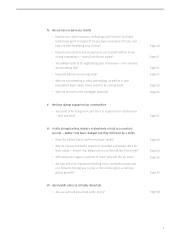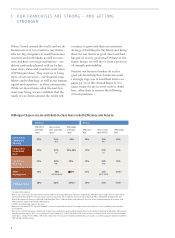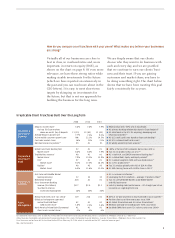JP Morgan Chase 2015 Annual Report Download - page 19
Download and view the complete annual report
Please find page 19 of the 2015 JP Morgan Chase annual report below. You can navigate through the pages in the report by either clicking on the pages listed below, or by using the keyword search tool below to find specific information within the annual report.-
 1
1 -
 2
2 -
 3
3 -
 4
4 -
 5
5 -
 6
6 -
 7
7 -
 8
8 -
 9
9 -
 10
10 -
 11
11 -
 12
12 -
 13
13 -
 14
14 -
 15
15 -
 16
16 -
 17
17 -
 18
18 -
 19
19 -
 20
20 -
 21
21 -
 22
22 -
 23
23 -
 24
24 -
 25
25 -
 26
26 -
 27
27 -
 28
28 -
 29
29 -
 30
30 -
 31
31 -
 32
32 -
 33
33 -
 34
34 -
 35
35 -
 36
36 -
 37
37 -
 38
38 -
 39
39 -
 40
40 -
 41
41 -
 42
42 -
 43
43 -
 44
44 -
 45
45 -
 46
46 -
 47
47 -
 48
48 -
 49
49 -
 50
50 -
 51
51 -
 52
52 -
 53
53 -
 54
54 -
 55
55 -
 56
56 -
 57
57 -
 58
58 -
 59
59 -
 60
60 -
 61
61 -
 62
62 -
 63
63 -
 64
64 -
 65
65 -
 66
66 -
 67
67 -
 68
68 -
 69
69 -
 70
70 -
 71
71 -
 72
72 -
 73
73 -
 74
74 -
 75
75 -
 76
76 -
 77
77 -
 78
78 -
 79
79 -
 80
80 -
 81
81 -
 82
82 -
 83
83 -
 84
84 -
 85
85 -
 86
86 -
 87
87 -
 88
88 -
 89
89 -
 90
90 -
 91
91 -
 92
92 -
 93
93 -
 94
94 -
 95
95 -
 96
96 -
 97
97 -
 98
98 -
 99
99 -
 100
100 -
 101
101 -
 102
102 -
 103
103 -
 104
104 -
 105
105 -
 106
106 -
 107
107 -
 108
108 -
 109
109 -
 110
110 -
 111
111 -
 112
112 -
 113
113 -
 114
114 -
 115
115 -
 116
116 -
 117
117 -
 118
118 -
 119
119 -
 120
120 -
 121
121 -
 122
122 -
 123
123 -
 124
124 -
 125
125 -
 126
126 -
 127
127 -
 128
128 -
 129
129 -
 130
130 -
 131
131 -
 132
132 -
 133
133 -
 134
134 -
 135
135 -
 136
136 -
 137
137 -
 138
138 -
 139
139 -
 140
140 -
 141
141 -
 142
142 -
 143
143 -
 144
144 -
 145
145 -
 146
146 -
 147
147 -
 148
148 -
 149
149 -
 150
150 -
 151
151 -
 152
152 -
 153
153 -
 154
154 -
 155
155 -
 156
156 -
 157
157 -
 158
158 -
 159
159 -
 160
160 -
 161
161 -
 162
162 -
 163
163 -
 164
164 -
 165
165 -
 166
166 -
 167
167 -
 168
168 -
 169
169 -
 170
170 -
 171
171 -
 172
172 -
 173
173 -
 174
174 -
 175
175 -
 176
176 -
 177
177 -
 178
178 -
 179
179 -
 180
180 -
 181
181 -
 182
182 -
 183
183 -
 184
184 -
 185
185 -
 186
186 -
 187
187 -
 188
188 -
 189
189 -
 190
190 -
 191
191 -
 192
192 -
 193
193 -
 194
194 -
 195
195 -
 196
196 -
 197
197 -
 198
198 -
 199
199 -
 200
200 -
 201
201 -
 202
202 -
 203
203 -
 204
204 -
 205
205 -
 206
206 -
 207
207 -
 208
208 -
 209
209 -
 210
210 -
 211
211 -
 212
212 -
 213
213 -
 214
214 -
 215
215 -
 216
216 -
 217
217 -
 218
218 -
 219
219 -
 220
220 -
 221
221 -
 222
222 -
 223
223 -
 224
224 -
 225
225 -
 226
226 -
 227
227 -
 228
228 -
 229
229 -
 230
230 -
 231
231 -
 232
232 -
 233
233 -
 234
234 -
 235
235 -
 236
236 -
 237
237 -
 238
238 -
 239
239 -
 240
240 -
 241
241 -
 242
242 -
 243
243 -
 244
244 -
 245
245 -
 246
246 -
 247
247 -
 248
248 -
 249
249 -
 250
250 -
 251
251 -
 252
252 -
 253
253 -
 254
254 -
 255
255 -
 256
256 -
 257
257 -
 258
258 -
 259
259 -
 260
260 -
 261
261 -
 262
262 -
 263
263 -
 264
264 -
 265
265 -
 266
266 -
 267
267 -
 268
268 -
 269
269 -
 270
270 -
 271
271 -
 272
272 -
 273
273 -
 274
274 -
 275
275 -
 276
276 -
 277
277 -
 278
278 -
 279
279 -
 280
280 -
 281
281 -
 282
282 -
 283
283 -
 284
284 -
 285
285 -
 286
286 -
 287
287 -
 288
288 -
 289
289 -
 290
290 -
 291
291 -
 292
292 -
 293
293 -
 294
294 -
 295
295 -
 296
296 -
 297
297 -
 298
298 -
 299
299 -
 300
300 -
 301
301 -
 302
302 -
 303
303 -
 304
304 -
 305
305 -
 306
306 -
 307
307 -
 308
308 -
 309
309 -
 310
310 -
 311
311 -
 312
312 -
 313
313 -
 314
314 -
 315
315 -
 316
316 -
 317
317 -
 318
318 -
 319
319 -
 320
320 -
 321
321 -
 322
322 -
 323
323 -
 324
324 -
 325
325 -
 326
326 -
 327
327 -
 328
328 -
 329
329 -
 330
330 -
 331
331 -
 332
332
 |
 |

1717
Unfortunately, some of the final rules around
capital are still not fully known at this time.
There are still several new rules coming that
also could impact our company – probably
the most important to us is how the GSIB
capital surcharge is incorporated into the
CCAR stress test. To date, we have managed
to what we do know. We believe that when
the final rules are made and known, we can
adjust to them in an appropriate way.
As banks change their business models to
adapt to the new world, some are exiting
certain products or regions. Market shares
will change, and both products and product
pricing will change over time. Therefore, we
think there will be a lot of adjustments to
make and tools to deploy so that we can still
serve our clients and earn a fair profit.
We operate in more than 100 countries
across the globe – and we are constantly
analyzing the geopolitical and country risks
that we face. The reason we operate in all
these countries is not simply because they
represent new markets where we can sell
our products. When we operate in a country,
we serve not only local institutions (govern-
ments and sovereign institutions, banks and
corporations in that country) but also some
of those institutions and corporations outside
their country, along with multinationals
when they enter that country. This creates
a huge network eect. In all the countries
where we operate, approximately 40% of the
business is indigenous, 30% is outbound and
30% is inbound. All these institutions need
financing and advice (M&A, equity, debt and
loans), risk management (foreign exchange
and interest rates) and asset management
services (financial planning and investment
management), as well as operating services
(custody and cash management) in their
own countries and globally. It takes decades
to build these capabilities and relationships
– we cannot go in and out of a country on a
whim, based on a short-term feeling about
risk in that country. Therefore, we need plans
for the long term while carefully managing
current risk.
We carefully monitor risks — country by country.
For each country, we take a long-term view
of its growth potential across all our lines
of business. Each country is dierent, but,
for the most part, emerging and developing
markets will grow faster than developed
countries. And as they grow, the need for
our services grows dramatically. While we
have a future growth plan for each country,
we obviously can’t know with any certainty
everything that will happen or the timing
of recessions. No matter what the future
brings, we make sure that we can easily
bear the losses if we are wrong in our
assessments. For each material country,
we look at what our losses would be under
severe stress (not that dierent from the
Fed’s CCAR stress test). We manage so
that should the extreme situation occur,
we might lose money, but we could easily
handle the result. Below are a few examples
of how we manage risk while continuing to
serve clients in specific countries.
China. We believe it likely that, in 20–25 years,
China will be a developed nation, probably
housing 25% or more of the top 3,000 compa-
nies globally. Going forward, we do not expect
China to enjoy the smooth, steady growth it
has had over the past 20 years. Reforming
inecient state-owned enterprises, developing
healthy markets (like we have in the United
States) with full transparency and creating a
convertible currency where capital can move
freely will not be easy. There will be many
bumps in the road. We publicly disclose in
our Form 10-K that we have approximately
$19 billion of country exposure to China. We
run China through a severe stress test (essen-
tially, a major recession with massive defaults
and trading losses), and we estimate that our
losses in this scenario could be approximately
$4 billion. We do not expect this situation to
How do you manage geopolitical and country risks?
